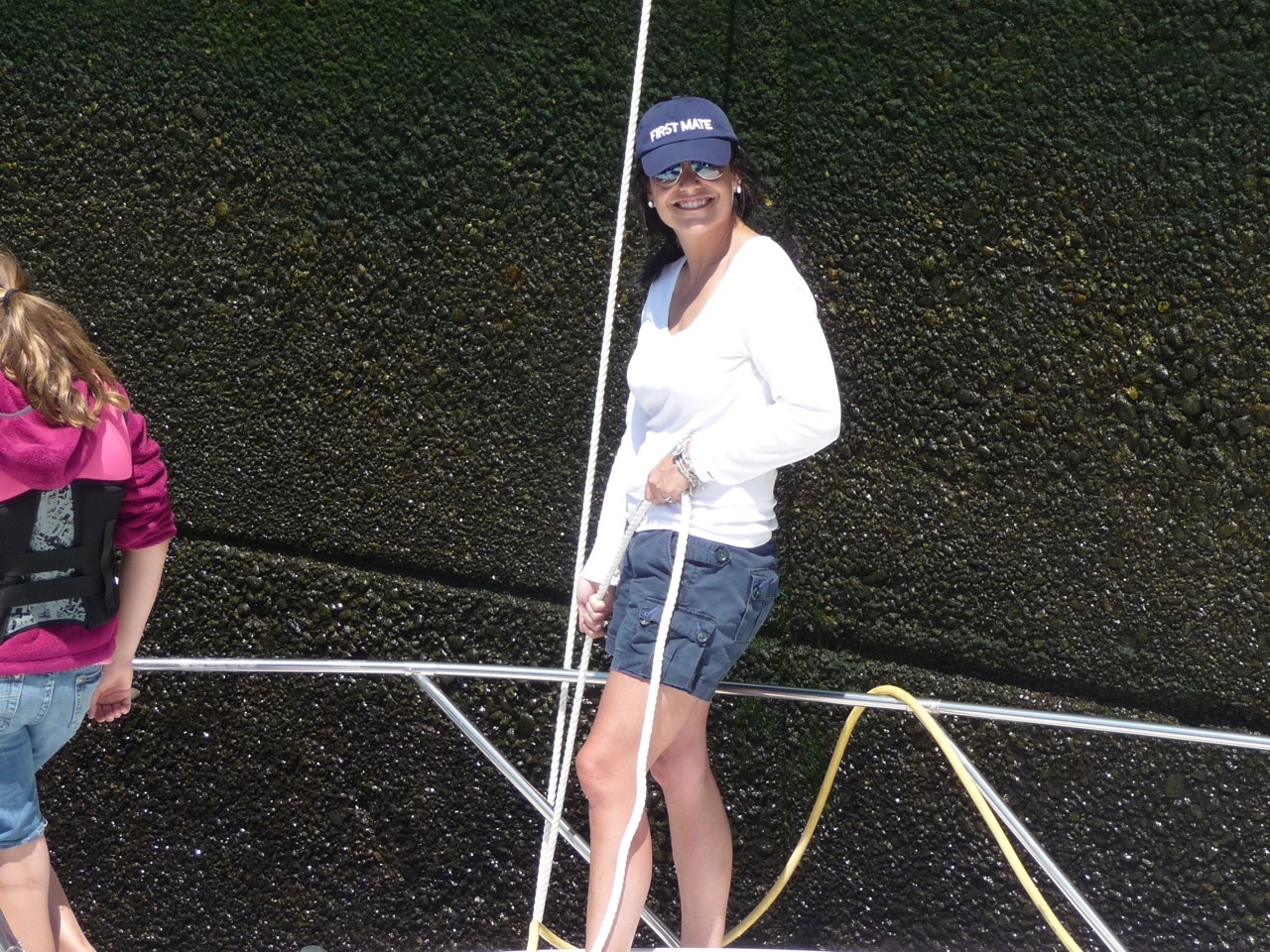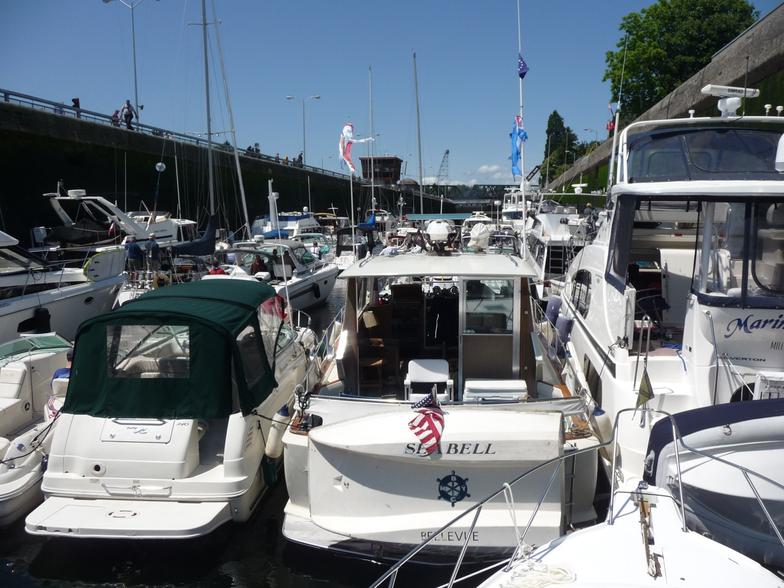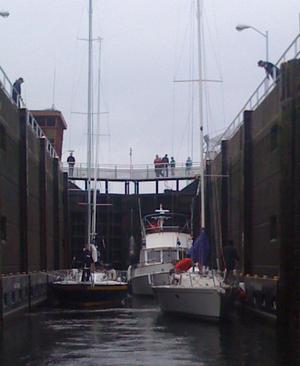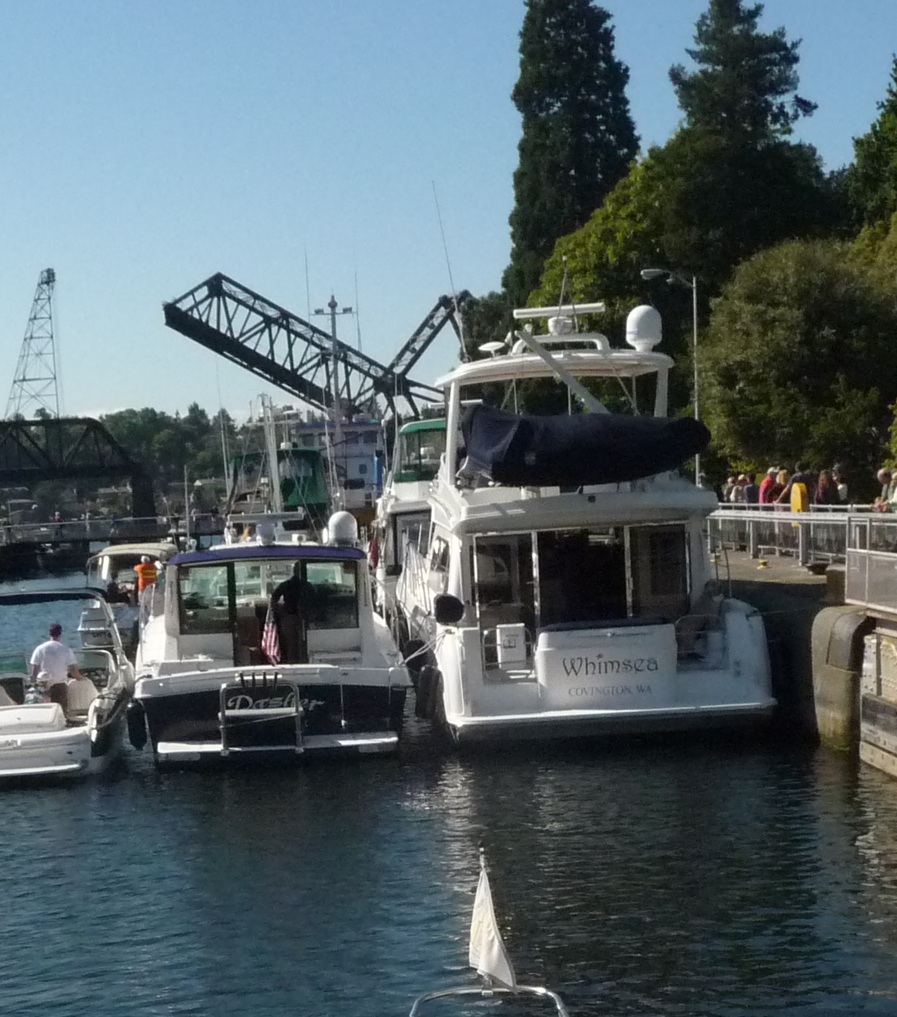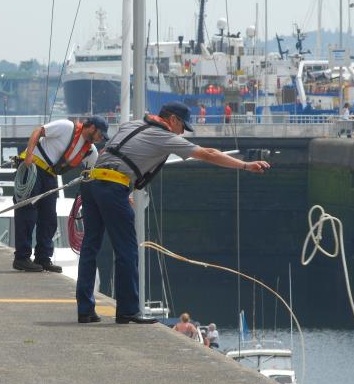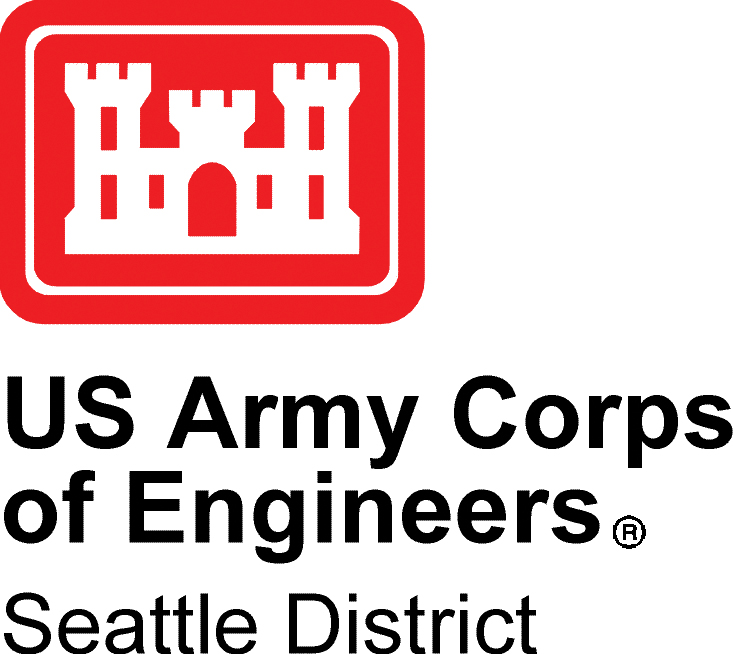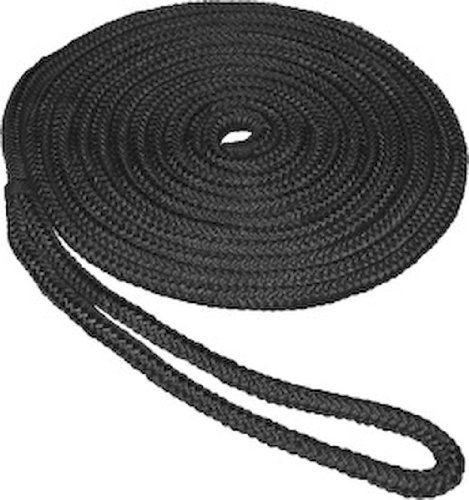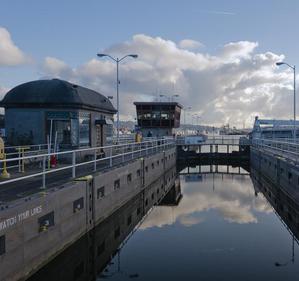Recreational Boating Information for the Northwest
Ballard Locks
Here's some tips along with the dos and don'ts so you can be an expert and conquer any fears of The Ballard Locks!
First - the main bullet points to know:
The Lock Master - there are 2 rules:
1st rule: The Lock Master is always right.
2nd rule: If you feel the Lock Master is wrong, refer to rule 1!
Removing Lines:
Lake side line should always be removed last due to current unless instructed otherwise. Lake line last! And NEVER untie a line off the wall or from another vessel until instructed.
Assist Fellow Boaters:
Once your vessel is secured, always be prepared to assist other vessels that may raft to you or near you.
Things you need to have, know and understand before you enter the locks.
MUST HAVE - Two 50 foot lines (for the large locks) with an eye at least 12 inches in diameter on one end and an adequate number of fenders for both sides of your vessel.
NEED TO KNOW - When approaching the locks, assume you'll be using the small locks located on the south side. You will see lights to indicate if you may proceed in or not. Green light means enter, Red means you'll be waiting. All commercial boats have priority. The Lock Master is just that so do what they say, no matter what! If you need to wait, (and it will happen) you can tie up on the south wall, either in the lake or the sound. Do not tie up on the north side wall. You may also raft off. If you're tied up, let others raft off you if possible. Some times in may take an hour or more before you get through and no one wants to idle that long. One last thing, when heading into the lake, you'll be going up in the locks. Heading to the sound, you'll be going down. When departing always remember - Lake Line Last.
UNDERSTAND - When using the locks, your crew should understand they have a role to play. Everyone needs to work together. Following directions is an absolute must. The one goal on everyone's mind is to get through without losing their mind or damaging their boat so look at what's happening around you. Is there a current? Windy? Raining? Number of boats waiting? Who's ahead of you? Whatever the situations is, be prepared for anything. The biggest issue you will run into is people being impatient and crowding. Give other boaters room to maneuver and make sure they're ready to receive you if you're rafting. Using normal logic seems easy but for some reason, it seems to get lost when you're inside these walls.
Small Locks:
The small locks will be on the south side. First thing to remember - small locks are first come, first serve. Be aware who's ahead of you and don't cut. Lock Master may request others to come in before you which they will hail over their PA system...rare but happens.
Second, the small locks have a sliding wall which moves up and down with the water level. This makes it pretty easy. When entering from the lake side, assume you'll tie up on the starboard side. From Puget Sound, most likely you'll tie up on the port side but be ready for anything.
As you enter, take it slow and don't crowd the other vessels. Look for one of the lock attendants and they will direct you where and what side to tie up.
Once you've entered, stern tie first, wrap you rope around the "button" and bring it back to the cleat. Don't tie it down too hard. The reason is in very rare situations the wall may fail and won't move with the water level. If this happens, you need to act fast and let line out.
Once the lockage is complete, the doors will open. DO NOT UNTIE until you're told to do so. If there is a vessel next to you, make sure you help guide them out. Once you've been given the OK to exit, untie in the order instructed and proceed slowly. It's a good idea to give yourself just a little push off so you don't slide or bang up against the wall as you leave. That's it! You've made it through the small locks.
Large Locks:
The large locks are on the north side. LARGE VESSELS FIRST! The large locks are just that, so don't worry about getting in. Holiday weekends are another story...prepare to wait. If you're smaller than most entering, you'll most likely raft off a larger vessel.
As you enter, assume you're going on the wall. This is where you need your 50 foot lines becuase there is no sliding wall. When entering to tie, it's pretty much the same as the small locks. Entering for the lake side , assume you'll tie up on the starboard side. From Puget Sound, the port side. Again, be prepared for anything and everything. Once your vessel is secure, be ready for others to raft off you.
From The Lake Heading to Puget Sound - Large Lock
In this situation you'll be going down. If you tie up on the wall you'll hand your "eye" end to the lock attendant. They will secure it around the "button" and hand any remaining back to you. Tie down both lines a.s.a.p. Once secured, be ready for another vessel to raft off you.
Once everyone is in and secured, they'll close the door and will anounce for everyone to "Man Your Lines". This means you need to untie and let line out as the water level goes down (only when you're on the wall). Be sure the stern is in tight as possible. This will keep your bow from hitting the wall. You will want to half wrap the line on the cleat for leverage and let it slide out as the water level goes down.
Once you've reached the bottom, you will be instructed to tie down your lines. Even though your lines are secured and tied down, you must stay alert. The current will pull you around as the doors open so stay on top of things. Never untie until you are told to do so by a lock attendant.
From The Sound Heading to the Lake - Large Lock
From this direction you will be going up. When entering, the locks attendant will throw down a line. You'll take that line and the "eye end" of your rope and tie them together. They will pull it up and secure it. Once secured up top, you'll tie your end down to the vessel. Again, once secured, be ready for others to raft off and stay alert. This is why you need to give other vessels space to maneuver. It takes some time to tie up in this situation. Due to the long line, it does take a little more time to secure your vessel.
When you hear the chime, it's time to go up. On your way up, it's important to keep the stern in tight as possible. If you float off the wall a little it'll be o.k. You'll be able to pull it back however you must communicate and work with the person manning the bow. Bring in the line as you rise to maintain a firm line.
Once you get to the top, you'll be told to tie down your lines. DO NOT UNTIE until you're told to do so. The water needs to equalize and there is a strong current.
Now this is all assuming you're on the wall. If you raft to another vessel, it'll be easy. When leaving from another vessel, give yourself a little push off so you don't rub up on their vessel and it's a good idea to do so when you're on the wall so you don't scratch up your own.
Remember, taking it slow, giving each other space and listen. The lock attendants are there to help and make your experience a good one. Also know, you will screw up once in awhile. Everyone does at some point but that's all part of learning, boating and conquering the locks!
Few Other Tips:
Every year the large or small locks will close down for a period of time for service. Visit their site for more information.
Also, it's always nice to have little treats on board like cookies or something like that for the lock attendants. They go through a lot and the better we treat them, the better they treat us. They're just doing their job and trying to protect us and our investment. Just remember, if you get snapped at, it's because you did follow their instructions. If you think you're right, just remember they're always right.
Note:
If you are a large vessel or sailboat, you may have to ask for as many as 5 bridges to be raised. You should know the height of your mast and be prepared to signal the bridge tender at least 100 yards (30.48 m) from the bridge.
Open Signal: 1 long & 1 short blast.
The Small Locks:
30 x 150 ft
8.5 x 45.7 meter
The Large Locks:
80 x 825 ft
24.4 x 251.5 meter
Operated by the U.S. Army Corps of Engineers, the locks were formally opened on July 4, 1917, although the first ship passed on August 3, 1916. They were named after U.S. Army Major Hiram Martin Chittenden, the Seattle District Engineer for the Corps of Engineers from April 1906 to September 1908. They were added to the National Register of Historic Places in 1978
The Hiram M. Chittenden Locks are open 24 hours a day, seven days a week. The grounds at the Locks are open from 7 a.m. to 9 p.m., Monday - Sunday, including all holidays. The fish ladder viewing gallery closes at 8:45 p.m.
The complex of locks sit in the middle of Salmon Bay and are part of Seattle's Lake Washington Ship Canal. They are known locally as the Ballard Locks after the neighborhood to their north. (Magnolia lies to the south.)
View Tutorial Video of the Ballard Locks from the
US Army Corps of Enginners, Seattle District.
Northwest Boating Information LLC | Return to top | www.nwboatinfo.com
Other facts: Since opening 100 years ago as a commercial navigation route, The Locks have evolved to become the busiest in the Nation with over 50,000 vessels/yr and 1.2+ Million visitors/yr.
The Locks are administered by the Corps of Engineers and Congressional funding is based on commercial cargo, not actual boat traffic or number of visitors. Unfortunately commercial cargo is now a small fraction of the traffic, making budgeting inadequate for this historic facility.
The video below is just a reminder what happens when you don't follow instructions in the locks. To our understanding, vessels started untying before instructed as they prepared to exit into the lake.


